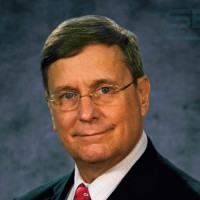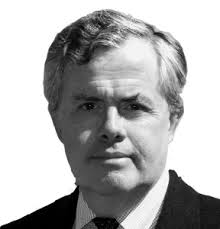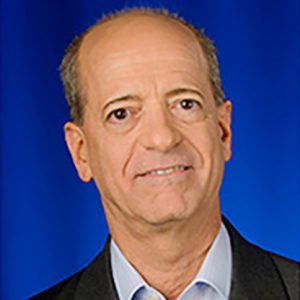HPA Tech Retreat: Can Next Gen TV Make Broadcasters vs. OTT a Fair Fight?
Panelists examine the potential of the ATSC 3.0 standard for over-the-air television
Story Highlights
The rise of ATSC 3.0, or Next Gen TV, took center stage on the annual Broadcasters Panel at the HPA Tech Retreat last week. With the promise to enable interactive features, higher-quality picture, better sound, and lower latency, the Next Gen TV standard promises to give over-the-air broadcasters a level playing field with the ever-growing number of OTT streaming services. However, without the government mandate that went along with the transition to digital broadcasting (DTV) in 2009 and with ATSC 3.0 TVs and mobile devices yet to proliferate on the market, Next Gen TV has yet to garner widespread momentum.
Chaired by Matthew Goldman, SVP, technology, Mediakind and featuring Dave Folsom, consultant, Pearl TV; Richard Friedel, EVP, engineering, operations and technology, Fox Television Stations; Del Parks, EVP/CTO, Sinclair Broadcast Group; and Skip Pizzi, VP, technology education and outreach, NAB, the panel provided an update on the ATSC 3.0/Next Gen TV transition and how the Phoenix Model Market beta program is serving as a test bed for the Next Gen TV ecosystem and examined the role the cloud will play and the business opportunities it could create.
What’s the latest on the Next Gen TV transition, and how will it be completed without disrupting the current ATSC 1.0 audience?
Folsom: “It’s going to take a little bit of legerdemain. The ATSC signal that we have now is occupying the frequencies and channels that are given to us by the FCC. There is a little bit of extra bandwidth there, and, if we can essentially clear one channel at a time of those individual services and move them over and share them on other channels, there will not be any difference to the viewer. Everything will appear the way it did [to the viewer], but it will free up a channel, and that freed-up channel can then carry up to five services at a time in ATSC 3.0/Next Gen TV. [That is] because the new codecs that are available are four to five times more efficient than the current ones. We will be able to fit many services on a single channel. And that will provide the mechanism, on a rolling basis, to clear the space to have alternative services on the air without losing your ATSC 1.0 audience because we have to keep paying the bill as we transition.
Why should the industry care about Next Gen TV, and what opportunities will it create for the business?
Parks: Syndicated entertainment television isn’t going anywhere. Most of the shows produced now are produced for a streaming service. The linear-TV business is migrating to live broadcasts. The future will be very local and very live [with] sports and news and the local programming. It’s just not viable for Hollywood to produce syndicated programs like they used to [for broadcast television].
Pizzi: [Next Gen TV] is something that the internet isn’t: OTT is anything but live and local. So broadcasters really are maintaining that service for consumers, who, we believe, will use [Next Gen TV] in addition to the mix of other media services [they have access to]. Now this live/local-focused service can coexist on a more even parity with those [OTT services] — in terms of both quality and interactivity. Next Gen TV gives broadcasters a level playing field to compete going forward.
Friedel: I think people in the [media industry] will care because there are going to be a lot more business opportunities, there’s more capacity, we’ll have better quality of pictures and sound. These are going to be the things that impact your businesses and impact the creative industry. I think it’s a really exciting time for everybody in Hollywood.
Pizzi: Fox did the Super Bowl [in 4K HDR] this year, but it was available only on alternative [streaming] platforms or in special [4K HDR] channels on the MVPDs. We think that will be the last year that that is the case; a UHD version of the Super Bowl will be available to a lot of people in the U.S. and more every year we host thereafter over the air and on unfree TV based on Next Gen TV.
Parks: When you look at the traditional TV business and how our business is going to transform, … over-the-air is just one distribution method we have. There’s also OTT, and there’s mobile. We’ve always believed that mobile is a really big business for us, especially for Next Gen TV, which we think is a mobile-first [platform]. This standard will allow you to receive pictures where you’ve never received them before. Even ATSC 1.0 was built around putting an antenna that rose 30 ft. above your house. … Over-the-air is a big piece of it, but it’s also about how we transform our industry to make our content available across all of the outlets where consumers want to look at our content.
What is the Phoenix Model Market, and how is the program progressing thus far?
Folsom: At first, of course, was the issue of how do you make that happen? We decided at Pearl, which is made up of nine large station-owner groups, to create a model station in Phoenix as an example of how it could be physically done without adding spectrum. When we had the transition from analog to digital, the FCC kindly gave us extra spectrum to take advantage of and allow for the transition. Not so [in this case]. We had to figure out a way of mechanically doing that. We use the Model Market Station as a means to do that. We also provide a forum for manufacturers of technical equipment on the new standard and the receiver manufacturers to test their facilities.
What role will the cloud play in the future of ATSC 3.0 Next Gen TV?
Parks: I think the cloud is extremely important. I don’t believe we will get to a next-gen distribution system of content without moving to the cloud. It’s absolutely critical when you think about how Next Gen TV works. Everybody probably thinks that it’s just about delivering pictures and video, but it’s also about delivering data. When you look at it in its totality, the cloud is extremely important to our operations.
Pizzi: [Next Gen TV] is delivering data in two directions, so the cloud is going to be a collection point for a lot more data that broadcasters will find out instantaneously from their audiences — rather than just relying on third-party data-collection services like Nielsen and so forth. [In addition], one of the largest impacts that ATSC 3.0/Next Gen TV will have is that it finally addresses the idea of a broadcast and broadband convergence. For the first time, the broadcaster and the consumer can have those two systems interact almost seamlessly. Today, Smart TVs connect to the internet and connect to a conventional television source, but you’re switching between the two. An ATSC 3.0 TV, the first of which are coming out now, puts those two together in a continuously variable way.
Friedel: It’s going to give us a bunch of new business opportunities, and that’s going to require broadcasters to work together and systems to work across [multiple] broadcasting stations. I think the cloud is going to drive that, and, certainly, the cloud is going to be a key part of the business systems required for our content protection.





